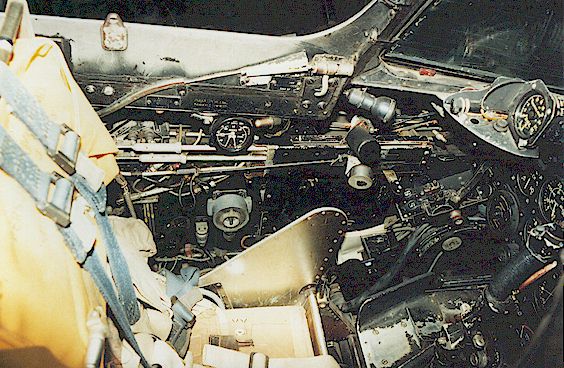

It uses the Classic Airframes kit to create the masters of the forward fuselage, canopy and cockpit, for use with the Airfix Meteor F.8 kit. This resin conversion is a “garage kit” released by “109ACE” and sold on eBay.

Gloster meteor cockpit serial numbers#
Xtradecals released 48051 “Meteor Night Fighters,” which included the squadron markings and serial numbers for eight Meteor NF 11s and an NF 13, which is a tropicalized NF 11 this was released at the same time as the Classic Airframes kit and is still available through Hannant's - the modeler is expected to use the national insignia from the kit decal sheet. Matchbox released a 1/72 Meteor NF 11 in the 1970s, and Xtrakit released an NF 11 that is essentially a scaled-down Classic Airframes kit (with all that means regarding assembly and fit)as the NF 11/12/14 in 2006, with a rebox in 2007 that has different decals. In 2005, classic Airframes released the only injection-molded 1/48 kit of a Meteor night fighter, the NF11. In the 1990s, Aeroclub released 1/48 vacuform/multi-media kits of the Meteor night fighters, including a NF 11/12 and NF 14. At least one came to the United States in the mid-1970s, where I saw it at Mojave Airport in 1976, and was privately operated for a few years. The only combat use of the Meteor night fighter came when the Israelis used one to intercept and shoot down an Il-14 transport flying from Damascus to Cairo in 1956 that it was believed the commander of the Egyptian Air Force was aboard (he wasn't) just at the outbreak of the 1956 war.įollowing their departure from first-line service, many N.F.11s were modified as target tugs with the designation T.T.20, and served in this role with both the RAF and FAA, as well as several other air forces, into the late 1970s. 40 very-similar tropicalized N.F.13s were produced, and these were the only Meteors in the RAF to come close to firing their guns in anger when they were used for the defense of Cyprus during the 1956 Suez intervention in the expectation the Egyptians might attack the island with their new Il-28 jet bombers. Fourteen RAF squadrons and two OCUs operated the fighter, with the type remaining operational until the early 1960s, while several were delivered to the French, Belgian and Danish air forces. After production of 338 N.F.11s, the last one left the factory in May, 1954. Production delivery of the N.F.11 began in October 1950 with the first airplane being delivered to 29 Squadron in early 1951. The standard armament of four 20mm cannon were removed from the fuselage and located in the wings immediately outboard of the engines. The night fighter used only the two-seat cockpit and forward fuselage of the trainer. The night fighter differed from the T.7 by the use of the original-span wings of the F.1 and F.3, an extended nose for the radar, and an F.8 rear fuselage with a five-foot extension in overall fuselage length. The first true prototype, WA546, made its first flight on May 31, 1950. The aerodynamic configuration of what was designated the Meteor N.F.11 was built onto and flight tested on the fourth production T.7 trainer in September 1949. Tests had already been made with F.3 and F.4 Meteors equipped with radar, which showed the Meteor could be adapted for night fighting.

The Meteor night fighter was in fact the most important British night and all-weather fighter of the 1950s in terms of numbers produced and operated.Īrmstrong Whitworth, which was involved in the production of the Meteor, was entrusted with the development of a night fighter based on the Meteor airframe to specification F.42/48. The trainer versions of the de Havilland Vampire and Venom would be developed into night fighters, as would the trainer version of the Gloster Meteor. Developments of existing jet aircraft were considered. Eventually, DeHavilland would develop the D.H.110 that became the Sea Vixen, and Gloster would develop the Javelin, but these aircraft were ten years in the future and there was a need for something immediately to fill the gap. None of the original submissions met the Air Ministry's requirements. The Air Ministry had already issued Specification F.44/46, calling for a two-sat, twin-jet powered, all-weather fighters. However, within a few years there was a proliferation of prototypes for jet-powered bombers with performance well in advance of anything used in the war already flying, and it was obvious that the Mosquitos would soon be outperformed by their opponents. Following the conclusion of the Second World War, the RAF's night and all-weather fighter squadrons were equipped with the latest versions of the excellent Mosquito night fighter, which had demonstrated its ability to deal effectively with piston-engine bombers.


 0 kommentar(er)
0 kommentar(er)
